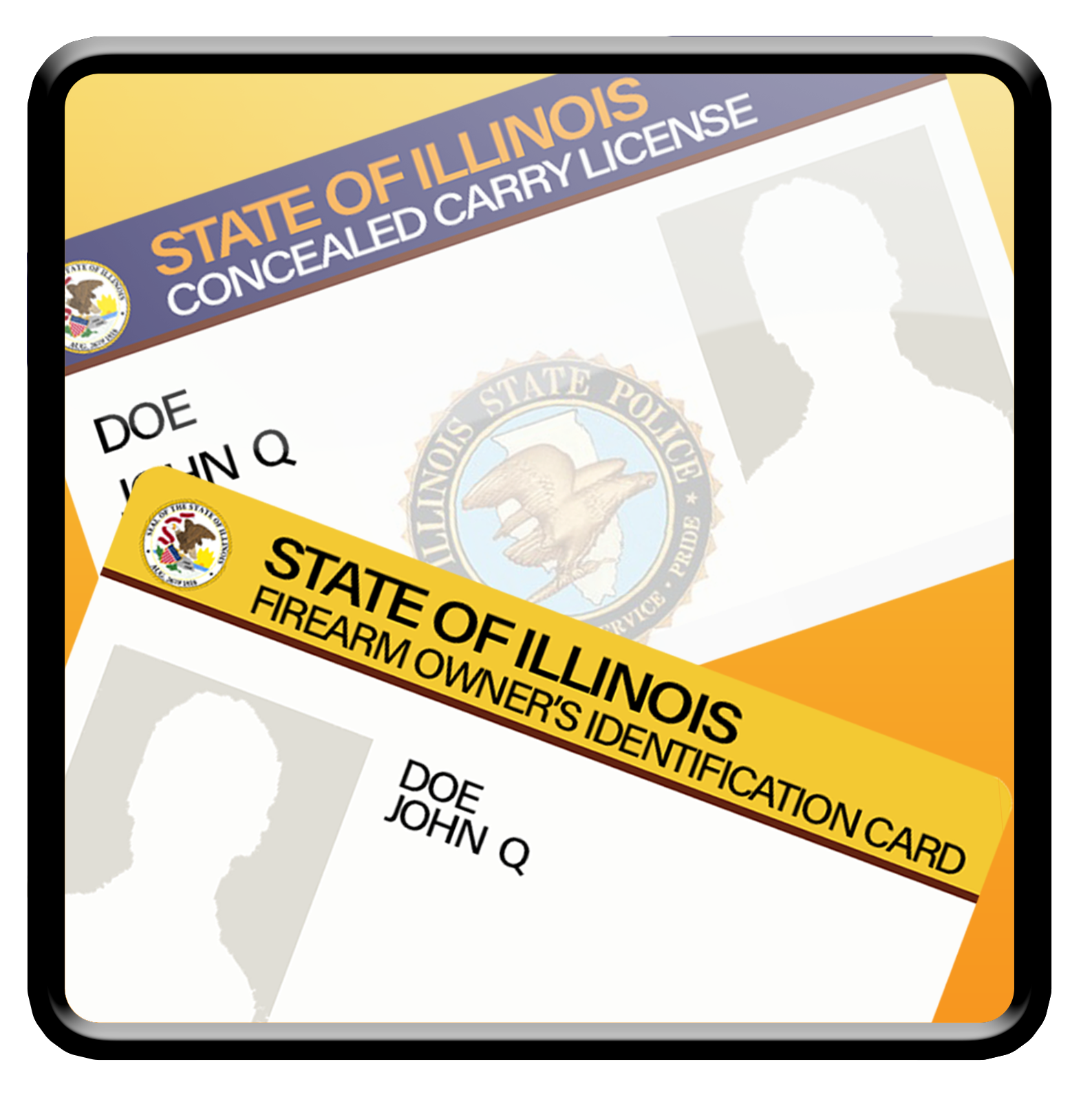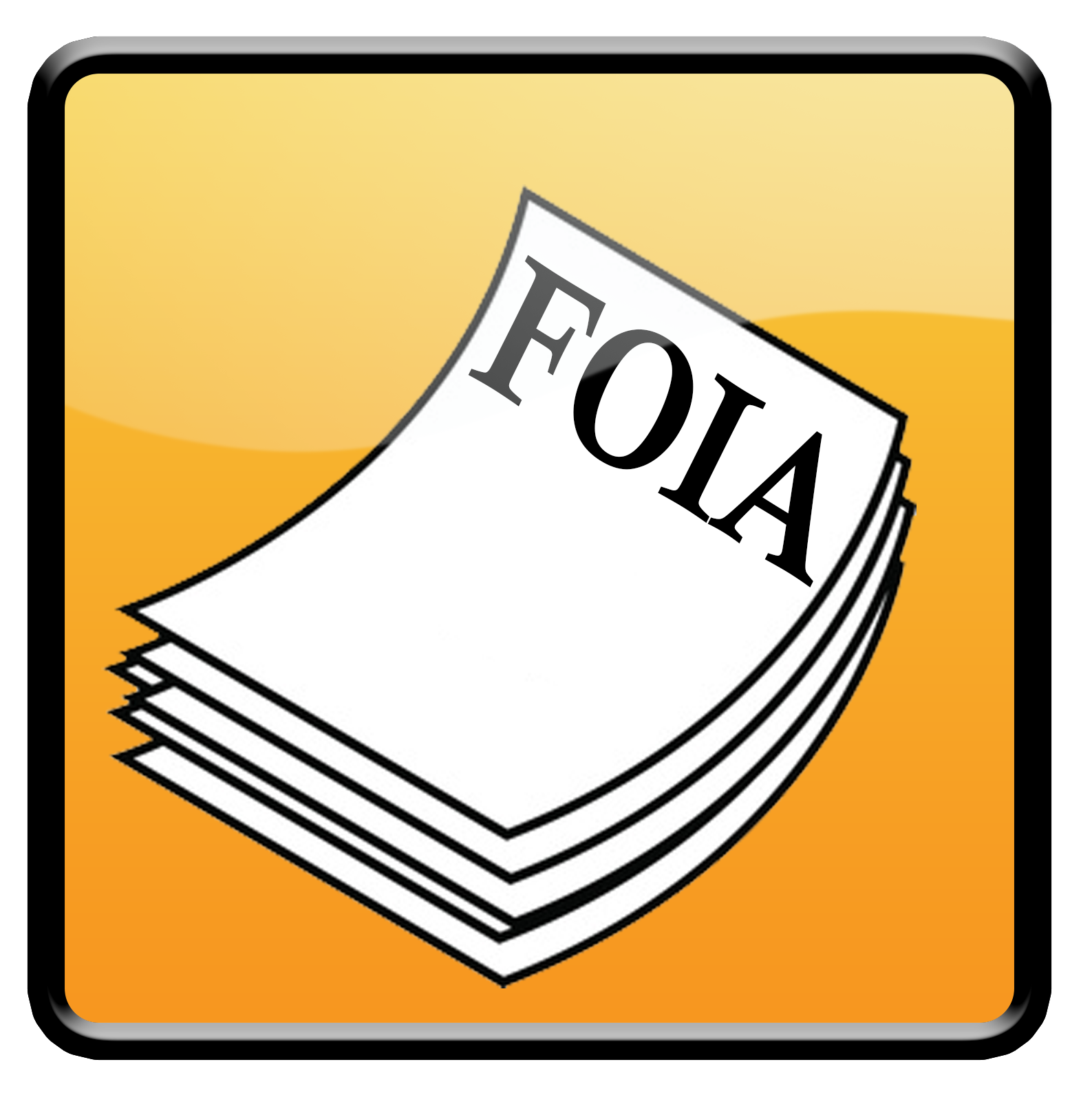Protect Illinois Communities Act, Regulation on Assault Weapons
On January 10, 2023, Governor JB Pritzker signed into law Public Act 102-1116 Opens in new window , the Protect Illinois Communities Act (Act). The Act regulates the sale and distribution of assault weapons, high-capacity magazines, and switches in Illinois. The Act went into effect immediately upon signing. Individuals who possessed assault weapons, high-capacity magazines, and other devices listed in the Act before it took effect are required to submit an endorsement affidavit through their Firearm Owner’s Identification Card account by JANUARY 1, 2024.
You can access your account by logging into the Firearms Service Bureau portal. To create an account, you will need an email address, driver's license or State ID, and FOID card (if applicable).
On September 15, 2023, ISP filed a proposed rule with the Illinois Secretary of State to implement the Act. The proposed rule. Opens in new window can be found in the Illinois Register.
On February 8, 2024, ISP adopted rules to implement the Act, which can be found in the Illinois Register.
Frequently Asked Questions
Firearms, Attachments, and Ammunition Subject to Regulation
PICA regulates the possession of assault weapons (among other things) and sets forth a definition that conveys which firearms are included in the Act. The definition of "assault weapon" in PICA is very broad including any firearm, part, or combination of parts designed to or intended to convert a firearm into an assault weapon as defined in the Act. For additional information, please refer to 720 ILCS 5/24-1.9(a)(1) and the ISP’s Assault Weapon Identification Guide.
Appendix A is not exhaustive but rather lists "assault weapons" that are eligible for the endorsement affidavit process and exemption. To ensure that any "assault weapon" (as defined by PICA) that was possessed on or before January 10, 2023, is incorporated into the endorsement affidavit process and exemption, the ISP mimicked the legislature’s language.
The ISP does not anticipate changing Appendix A insofar as it was drafted broadly enough to incorporate all assault weapons that meet the statutory definition so that they are subject to the endorsement affidavit process. The ISP has provided an Assault Weapon Identification Guide and flow charts to help people understand what is and is not regulated by PICA. Appendix A is a list of firearms for which an endorsement affidavit must be submitted
Yes, receivers designed or intended to convert a firearm into an assault weapon are regulated. Please refer to section 720 ILCS 5/24-1.9(a)(1)&(3).
PICA Identification Guide.pdfOpens in new window.
Yes, there is a specific exemption within PICA for assault weapons being repaired by Federal Firearms Licensees (FFLs) and gunsmiths. Further, you can repair your own assault weapon insofar as you do not need to replace parts that would be considered "assault weapon attachments" under PICA. Since non-exempt individuals cannot purchase assault weapon attachments, such parts would need to be replaced by an FFL or gunsmith.
Pursuant to the provisions of 720 ILCS 24-1.9(d) and 720 ILCS 24-1.10(d), assault weapons, .50 caliber rifles, and large capacity ammunition feeding devices may be temporarily surrendered to an FFL or gunsmith for repairs regardless of the duration of the repairs. Any FFL or gunsmith making repairs pursuant to these provisions may order the parts necessary to complete such repairs and return the items to their owner upon completion of the repairs. Repairs shall not include the purchase of additional assault weapon attachments beyond those necessary to make the item functional again.
No. A shroud is not an integral component of the stock, but rather a separate piece. For example, the wooden forestock on a base model Ruger 10/22 does not constitute a shroud. See ISP’s guide.
Other examples of forestocks not constituting shrouds would be the base model M1 Carbine, M1 Garand, and Savage, Model 850, assuming they have no other features regulated by PICA and/or have not been modified to include any regulated features or attachments. For additional information regarding the definitions of barrel shroud, flash suppressor, muzzle brake, and stock, please refer to the ISP’s rules.
While both are barrel attachments, they serve different purposes. A flash suppressor is designed to reduce the muzzle flash of the firearm. On military firearms, this is to prevent distant opponents from seeing where someone may be shooting from. A muzzle brake directs the energy of the muzzle blast in a specified direction in order to reduce the felt recoil of the discharge of the firearm or to prevent the muzzle from jumping during shooting. Most muzzle brakes do nothing to reduce the flash, and the specific one produced by Springfield has been ruled by ATF to not be a flash suppressor. For additional information regarding the definitions of barrel shroud, flash suppressor, muzzle brake, and stock, please refer to the ISP’s rules.
The list provided below is intended to be illustrative and not exhaustive:
- a pistol grip or thumbhole stock;
- any feature capable of functioning as a protruding grip that can be held by the non-trigger hand;
- a folding, telescoping, thumbhole, or detachable stock, or a stock that is otherwise foldable or adjustable in a manner that operates to reduce the length, size, or any other dimension, or otherwise enhances the concealability of, the weapon;
- a flash suppressor;
- a grenade launcher;
- a shroud attached to the barrel or that partially or completely encircles the barrel, allowing the bearer to hold the firearm with the non-trigger hand without being burned, but excluding a slide that encloses the barrel;
- a threaded barrel; and
- a buffer tube, arm brace, or other part that protrudes horizontally behind the pistol grip and is designed or redesigned to allow or facilitate a firearm to be fired from the shoulder.
Assault weapon attachments do not include integral parts, components of an assault weapon, or other items not specifically designed for a firearm, for example items specifically designed for an airsoft gun. Rather they are supplementary items that can be attached to assault weapons.
- Scopes and scope mounts
- Red dot sights, holographic sights, and their mounts
- Laser sighting devices
- Flashlights or other lighting devices
- Slings and sling mounts
- Aftermarket stocks that do not otherwise meet the criteria in (1)(a)
- Picatinny rails (used for attaching devices to the exterior of a firearm)
- Bayonets and bayonet mounts
- Belt clips / minimalistic holsters (pistols)
To be an assault weapon attachment, the item must be specifically designed for a firearm. Items specifically designed for airsoft guns are not assault weapon attachments and an endorsement affidavit would not be required.
If a person were to attach parts specifically designed for an airsoft gun to a firearm thereby bringing it within the definition of assault weapon under PICA, the firearm would be regulated, and an endorsement affidavit would be required.
If the “gunstock” in question has one of the features listed below, it is regulated by PICA.
- a pistol grip or thumbhole stock;
- any feature capable of functioning as a protruding grip that can be held by the non-trigger hand;
- a folding, telescoping, thumbhole, or detachable stock, or a stock that is otherwise foldable or adjustable in a manner that operates to reduce the length, size, or any other dimension, or otherwise enhances the concealability of, the weapon;
If the parts or combination of parts are designed to and function to increase the rate of fire of a semiautomatic firearm about the standard rate of fire for semiautomatic firearms that are not equipped with that part or combination of parts, they are regulated by PICA.
Only assault weapons, assault weapon attachments, .50 caliber rifles, and .50 caliber cartridges are subject to the endorsement affidavit process.
Assault weapons attachments do not include integral parts or components of an assault weapon but rather are supplementary. So, any item that alone constitutes an assault weapon attachment is subject to the endorsement affidavit process.
“Capacity” means the total number of rounds that can be used of the maximum identified chambered sized round.
If the shotgun’s fixed magazine tube will accept more than 5-rounds of the maximum identified chambered size round, it is regulated by PICA and subject to the endorsement affidavit provisions.
Extension tubes are neither fixed nor detachable magazines, however, they are considered an assault weapon attachment subject to the endorsement affidavit requirement if used for something other than hunting.
If the shotgun’s fixed magazine tube will not accept more than 5 rounds of the maximum identified chambered size round, it is not regulated by PICA unless it has one of the features otherwise regulated – for example a pistol grip or thumbhole stock.
Section 1.10 of PICA does not regulate shotguns but rather regulates large capacity ammunition feeding devices. With respect to magazines, belts, drums, feed strips and other similar devices for shotguns, if it accepts more than 10 rounds of any type of ammunition it is regulated by PICA; however, the endorsement affidavit provisions do not apply to large capacity ammunition feeding devices.
There is a specific exemption for tubular devices designed to accept, and capable of operating only with, .22 caliber rimfire ammunition.
If the firearm in question is a shotgun with a revolving cylinder it is regulated regardless of the chamber size. Pistols with revolving cylinders are not regulated.
Endorsement Affidavit Requirements
Yes. All Illinois residents must submit an endorsement affidavit for their AR-type or assault weapons unless exempt. Endorsement affidavits must be completed prior to January 1, 2024.
There is no fee.
Failing to complete and submit the required endorsement affidavit while in possession of items regulated by PICA prior to January 1, 2024, is a violation of Illinois law – specifically, the FOID Act and the Criminal Code of 2012 – unless the individual is exempt. The sentencing ranges are set forth in 430 ILCS 65/14 and 720 ILCS 5/24-1(b). Persons who violate these requirements may be arrested and charged.
Law enforcement agencies, including the ISP, are charged with enforcing the Protect Illinois Communities Act throughout Illinois. ISP will continue to enforce the Firearm Owners Identification Card Act and Article 24 of the Criminal Code of 2012 by partnering with local law enforcement through our Violent Crime Intelligence Task Force. The task force is a collaborative effort to reduce and prevent illegal possession and use of firearms, firearm related homicides, and other violent crimes. All law enforcement officers will have access to the resources the ISP has made available to the public to ensure they are able to identify items regulated by the Protect Illinois Communities Act.
You must apply for a Firearm Owner’s Identification Card and complete an endorsement affidavit within 60 days of moving to Illinois. See 720 ILCS 5/24-1.9 and 20 Ill. Admin. Code 1230.15. You may complete an endorsement affidavit while your FOID Card application is pending.
If you are denied a FOID card, you can surrender the assault weapon, assault weapon attachment, .50 caliber rifle, or .50 BMG caliber cartridge to law enforcement for safekeeping while seeking relief from such denial.
A FOID card is not required to complete the endorsement affidavit for an Assault Weapon Attachment only. You may access the Firearms Services Bureau Applicant Portal at LoginOpens in new window and complete the user registration. Once completed, while you are signed into your dashboard you will be able to disclose your Assault Weapon Attachment. Tutorial videos on how to complete the disclosure processes are posted to the Department’s website at Appication InstructionsOpens in new window.
A person who has submitted an endorsement affidavit for an assault weapon or .50 caliber rifle that, as manufactured, has features that if removed would constitute assault weapon attachments is only required to submit an endorsement affidavit for the assault weapon or .50 caliber rifle. If a person has submitted an endorsement affidavit for an assault weapon or .50 caliber rifle that, as manufactured, has features that if removed would constitute assault weapon attachments and subsequently removes items that separately constitute assault weapon attachments and retains possession, the person shall submit an updated endorsement affidavit. If a person owns multiple assault weapons and/or assault weapon attachments, an endorsement affidavit must be completed for each individual item unless the item has the same exact make and model number. For those items with the same exact make and model number, one endorsement affidavit can be completed with a note added in the description listing the relevant quantity.
No. The endorsement affidavit only applies to assault weapons, assault weapon attachments, .50 caliber rifles, or .50 BMG caliber cartridge devices.
720 ILCS 5/24-1.9(e)(2)(assault weapon ban) and 720 ILCS 5/241.10(e)(2)(large capacity ammunition ban) considers “qualified law enforcement officers” to mean any employee of a governmental agency who—
- is authorized by law to engage in or supervise the prevention, detection, investigation, or prosecution of, or the incarceration of any person for, any violation of law, and has statutory powers of arrest or apprehension;
- is authorized by the agency to carry a firearm;
- is not the subject of any disciplinary action by the agency which could result in suspension or loss of police powers;
- meets standards, if any, established by the agency which require the employee to regularly qualify in the use of a firearm;
- is not under the influence of alcohol or another intoxicating or hallucinatory drug or substance; and
- is not prohibited by Federal law from receiving a firearm.
18 U.S.C. 926(C) defines “qualified retired law enforcement officers” to mean an individual who—
- separated from service in good standing from service with a public agency as a law enforcement officer;
- before such separation, was authorized by law to engage in or supervise the prevention, detection, investigation, or prosecution of, or the incarceration of any person for, any violation of law, and had statutory powers of arrest or apprehension under section 807(b) of title 10, United States Code (article 7(b) of the Uniform Code of Military Justice);
- (A) before such separation, served as a law enforcement officer for an aggregate of 10 years or more; or (B) separated from service with such agency, after completing any applicable probationary period of such service, due to a service-connected disability, as determined by such agency;
- during the most recent 12-month period, has met, at the expense of the individual, the standards for qualification in firearms training for active law enforcement officers, as determined by the former agency of the individual, the State in which the individual resides or, if the State has not established such standards, either a law enforcement agency within the State in which the individual resides or the standards used by a certified firearms instructor that is qualified to conduct a firearms qualification test for active duty officers within that State;
- (A) has not been officially found by a qualified medical professional employed by the agency to be unqualified for reasons relating to mental health and as a result of this finding will not be issued the photographic identification as described in subsection (d)(1); or (B) has not entered into an agreement with the agency from which the individual is separating from service in which that individual acknowledges he or she is not qualified under this section for reasons relating to mental health and for those reasons will not receive or accept the photographic identification as described in subsection (d)(1);
- is not under the influence of alcohol or another intoxicating or hallucinatory drug or substance; and
- is not prohibited by Federal law from receiving a firearm.
An individual or FFL should require proof that the buyer meets these conditions prior to transferring a regulated weapon or large capacity ammunition device.
Proof of eligibility means a copy of a current or retired employment identification card, a letter from the employing agency on official letterhead, or any similar official instrument used to confirm employment and identity.
Corrections employees (Juvenile Justice or similar jail/detention center) who either are (1) authorized to carry a firearm and have even limited arrest powers or (2) are responsible for maintaining public order or the detention of persons accused or convicted of an offense are exempt from the endorsement affidavit requirement.
However, upon retirement to remain exempt they must prove they are able to maintain the standards for qualification in firearms training for active law enforcement officers. The applicable exemption may be either 1.9(e)(1), (2), or (4).
Even those employees exempt pursuant to 1.9(e)(2) will not likely remain exempt in their retirement (or upon separation from employment) unless they are able to maintain the standards for qualification in firearms training for active law enforcement officers. Accordingly, they must comply with the endorsement affidavit provisions while actively employed in this capacity to ensure compliance with those provisions upon retirement or separation from their employment.
Assault weapons
- used by persons like members of Armed Services or Reserve Forces of the U.S. or Illinois National Guard, armed security at nuclear energy sites, and licensed private security personnel in the performance of their official duties,
- transported to and from their official duties,
- secured at home or their place of business, or
- possessed for the purposes of attending training approved by a licensed Illinois private detective agency or security contractor agency or the military, including travel to and from such training,
are exempt from the endorsement provisions so long as the person possesses a valid firearm control card, where applicable, and valid firearm owner's identification card, for the duration of their employment.
Any person no longer employed by such an agency and not having an active firearm control card, shall file an electronic endorsement affidavit prior to separation from the employment giving rise to the exemption.
The statute provides that a person's possession of an assault weapon, assault weapon attachment, .50 caliber rifle, or .50 BMG caliber cartridge device may continue after January 1, 2024, so long as they provide an endorsement affidavit prior to that date. The statute does not expressly require that assault weapons owned by businesses be endorsed. However, the business may voluntarily submit an endorsement affidavit.
Assault weapons owned by individuals (even if the person owns a business or is licensed as an FFL) are subject to the endorsement affidavit.
Individuals who are FFLs and not exempt pursuant to 1.9(e) must comply with the endorsement affidavit requirements. Businesses that are FFLs may complete the endorsement affidavit for any regulated items still within their inventory.
PICA does not limit who can or cannot file an endorsement affidavit. People under 21 years of age may do so.
The statute regulates the .50 BMG cartridge and is silent on the issue of reloading. The individual will simply indicate the # of cartridges being endorsed.
Buying, Selling, or Transferring Assault Weapons
No. Illinois residents cannot lawfully purchase an AR 15 or assault weapon after January 11, 2023, unless subject to one of the narrow exemptions listed in section 720 ILCS 5/24-1.9(e) within the link above.
Prior to January 1, 2024, the owner may transfer the assault weapon to an heir, an individual residing in another state maintaining it in another state, or a federal firearms licensee. If possession continues beyond January 1, 2024, the owner must have completed the endorsement affidavit and submit it to the Illinois State Police and then, may only transfer the assault weapon to an heir, an individual residing in another state maintaining it in another state, or a federal firearms licensee.
These items may only be transferred to
-
persons exempt from the PICA regulations within 720 ILCS 5/24-1.9(e) or 720 ILCS 5/24-1.10(e)
OR - an heir, which includes any person or entity who is entitled to receive a distribution pursuant to intestate succession, will, trust, or other method permitted by law upon the death of the owner.
Federal Law, Court Decisions, and Injunctions
If the purchase of a firearm or firearm attachment regulated under PICA was initiated and completed between the date of the Southern District of Illinois’ Order on April 28, 2023, until the stay of such Order by the U.S. Appellate Court on May 4, 2023, the possession of such weapon will be unlawful beginning January 1, 2024, pursuant to 720 ILCS 5/24-1.9(c).
Persons who possess a regulated firearm or firearm attachment are required to complete an endorsement affidavit prior to January 1, 2024, stating that any regulated firearm or firearm attachments were possessed prior to the enactment of PICA (January 10, 2023) pursuant to 720 ILCS 5/24-1.9(d).
ISP will update this guidance as further court proceedings resolve.
Federally Licensed Firearms Dealers
Locations Where Assault Weapons Can Be Used
An Illinois resident can legally possess an assault weapon, assault weapon attachment, .50 caliber rifle, or .50 caliber cartridge on private property owned or immediately controlled by the person, on private property that is not open to the public with the express permission of the person who owns or immediately controls such property, while on premises of a licensed firearms dealer or gunsmith for lawful repair, at a licensed firing range or sport shooting competition venue, or while traveling to and from these locations. After January 1, 2024, an individual must have submitted an endorsement affidavit to legally possess the above regulated items in these areas.
These geographical restrictions also apply to large capacity ammunition feeding devices, however, PICA does not require an endorsement affidavit for large capacity ammunition feeding devices.
Hunting with an Assault Weapon
The regulated firearm must be legally possessed, including but not limited to compliance with the FOID Act.
If you are hunting on private property, you must have permission from the landowner, the firearm must be authorized for hunting use under the Wildlife Code, and the hunter must have the appropriate licenses, permits, tags, etc.
If you are hunting on DNR lands, the firearm must be authorized for hunting use under the Wildlife Code, and the hunter must have the appropriate licenses, permits, tags, etc.
If you own the firearm and your possession extends beyond hunting use, you must complete an endorsement affidavit prior to January 1, 2024, unless you are otherwise exempt from the endorsement affidavit provisions.
The possession exemption is driven by the plain language of the statute. The possession exemption is for while the person is engaged in certain exempt activities - like hunting - and while traveling to or from a location authorized for the activity.
If the assault weapon is owned by the person engaged in the exempt activity, possession extends beyond the exemption. The person is still permitted to possess the assault weapon, but an endorsement affidavit is required.
Definition of Large Capacity Ammunition Feeding Device
A magazine, belt, drum, feed strip, or similar device that has a capacity of, or that can be readily restored or converted to accept, more than 10 rounds of ammunition for long guns and more than 15 rounds of ammunition for handguns; or any combination of parts from which a device described can be assembled. See 720 ILCS 5/24-1.10(a).
Public Act 102-1116 states a “Large capacity ammunition feeding device means a magazine, belt, drum, feed strip, or similar device that has a capacity of, or that can be readily restored or converted to accept, more than 10 rounds of ammunition for long guns and more than 15 rounds of ammunition for handguns.
“Readily assembled, modified, restored or converted” shall mean any assembly, modification, restoration, or conversion beyond those that would be required in regular maintenance that is fairly or reasonably efficient, quick, and easy, and does not require special knowledge or skill, additional parts or tools, or significant expense. Readily assembled, modified, restored, or converted shall not include assembly, modifications, restorations, or conversions that would damage or destroy the firearm or cause it to malfunction.
As a result, a 15 round magazine without an extension kit is legal.
Yes. If, they legally owned it prior to January 11, 2023, and abide by the limitations within the Act as to where it may be possessed. See 720 ILCS 5/24-1.10(d).
Buying, Selling or Transferring Large Capacity Ammunition Feeding Devices
No, unless subject to one of the narrow PICA exemptions, purchases are not permitted.
Yes. However, you must transfer it to an authorized person as outlined in the Protect Illinois Communities Act (an heir, an individual residing in another state maintaining it in another state, or a dealer licensed as a federal firearms dealer).
Further within 10 days of the transfer (except if transferred to an heir), you must notify the Illinois State Police by using the Person-to-Person transfer portal.
Traveling Through Illinois with an Assault Weapon or High-Capacity Magazine
Any nonresident who transports, within 24 hours, a weapon for any lawful purpose from any place where the nonresident may lawfully possess and carry that weapon to any other place where the nonresident may lawfully possess and carry that weapon if, during the transportation, the weapon is unloaded, and neither the weapon nor any ammunition being transported is readily accessible or is directly accessible from the passenger compartment of the transporting vehicle. If the vehicle does not have a compartment outside of the driver’s compartment, the weapon or ammunition shall be contained in a locked container other than the glove compartment or console.
Security of Endorsement Affidavits
The current security measures in place are compliant with – and often exceed -- all FBI Criminal Justice Information Services (CJIS) Data Security Addendum standards. During the 2021 cyber intrusion attempt, the current system itself was not breached. Personal data gained from an earlier IDES breach was exploited to begin limited system access, but no accounts were entered. Since then, additional safeguards were added, and protocols were updated to strengthen identity confirmation.
720 ILCS 24/5-1.9(d) provides in relevant part that endorsement affidavit information may be disclosed to law enforcement agencies acting in the performance of their duties.
“Notwithstanding any other law, information contained in the endorsement affidavit shall be confidential, is exempt from disclosure under the Freedom of Information Act, and shall not be disclosed, except to law enforcement agencies acting in the performance of their duties.”
20 ILCS 2605/2605-45 provides in relevant part that the Division of Justice Services shall exercise the following functions:
(1) Operate and maintain the Law Enforcement Agencies Data System (LEADS), a statewide, computerized telecommunications system designed to provide services, information, and capabilities to the law enforcement and criminal justice community in the State of Illinois.
Insofar as law enforcement is authorized to receive the endorsement affidavit information in the performance of their duties and the ISP is authorized to operate and maintain LEADS for purposes of providing information to the law enforcement community, these provisions collectively grant the ISP the authority to utilize LEADS for the purposes of communicating to law enforcement whether a person has submitted an endorsement affidavit and is therefore subject to the exemption as set forth in 720 ILCS 24/5-1.9(d).
Yes. A concealed carry handgun must comply with PICA regulations. A handgun is regulated by PICA if it has any features set forth in 720 ILCS 5/24-1.9(c)(e.g. a threaded barrel) and if it is a firearm listed by name in 720 ILCS 5/24-1.9(k). The handgun cannot have a magazine capable of holding more than 15 rounds of ammunition as that magazine is considered a large capacity ammunition feeding device that can only be lawfully possessed in limited places set forth in 720 ILCS 5/24-1.10(d).
No. PICA sets deadlines for submitting endorsement affidavits depending upon the circumstances – possession prior to 1/10/23, inheritance, moving into Illinois, etc. The FOID Portal will remain open for individuals to complete an affidavit indefinitely. There are not separate fines or penalties for late submissions. However, the relevant jurisdiction could deem a late endorsement affidavit submittal to be invalid or insufficient.
FAQ Table of ChangesOpens in new window
If you have questions about compliance with the Protect Illinois Communities Act not answered in the above FAQs or need help submitting an endorsement affidavit, you can email ISP.AskFOIDandCCL@illinois.gov, or visit one of the ISP FOID Kiosks.
Protect Illinois Communities Act Affidavit Process Video
The Illinois State Police held three public hearings on the Protect Illinois Communities Act proposed rule. The hearings were scheduled at the following locations and recorded via WebEx. Notice: The period for submitting witness slips requesting to speak and submit written comments to be read has closed. You may continue to submit comments at mailto:ISP.Legal.PublicComments@illinois.gov in response to the ISP’s proposed rules during first notice. The public comments period ends November 20, 2023.
For more information, click Legislation Public Notice 20-1230NT-NPH.pdfOpens in new window.
Thursday, November 2, 2023
9:30 a.m., Room D1 of the Stratton Building, 401 Spring Street, Springfield, IL 62704
WebEx Recording -
HearingLegislationNPublicNotice/20-1230NT-NPH.pdf
Friday, November 3, 2023
9:30 a.m., Room C-600 of the Bilandic Building, 160 N. La Salle Street, Chicago, IL 60601
WebEx Recording -
HearingLegislationNPublicNotice/20-1230NT-NPH.pdf
Monday, November 6, 2023
9:30 a.m., Caseyville Community Center at Village Hall, 909 South Main Street, Caseyville, IL 62232
WebEx Recording -
HearingLegislationNPublicNotice/20-1230NT-NPH.pdf
Kiosk Locations and Hours
Northern Illinois
Illinois State Police Troop 3
16648 Broadway St, Lockport, IL 60441
Regular Hours: M-F 7:00 am - 11:30 am & 12:30 pm - 3:30 pm
Central Illinois
Illinois State Police Troop 6
801 S 7th St, Springfield, IL 62703
Regular Hours: M-F 8:30 am – 12:00 pm & 1:00 pm – 5:00 pm
Southern Illinois
Illinois State Police Troop 8
1100 Eastport Plaza Dr, Collinsville, IL 62234
Regular Hours: M-F 7:00 am – 12:30 pm & 1:00 pm – 3:00 pm
Illinois State Police Troop 10
1391 S Washington St, Du Quoin, IL 62832
Regular Hours: M-F 8:30 am – 12:00 pm & 1:00 pm – 5:00 pm
*Hours are subject to change
- Firearm Owner’s Identification Card Portal - LoginOpens in new window
- Protect Illinois Communities Act - 102-1116.pdfOpens in new window























